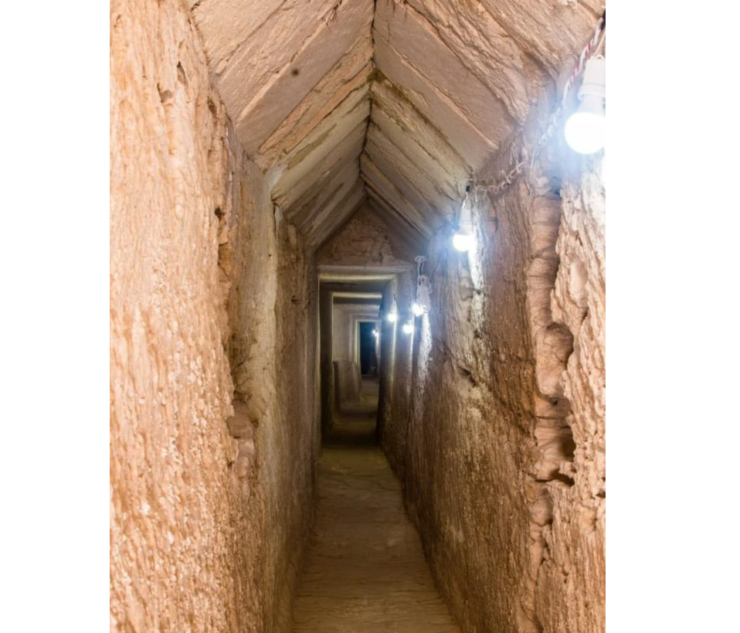The structure was found 13 meters (43 feet) below the surface by Kathleen Martinez of the University of Santo Domingo in the Dominican Republic and colleagues during ongoing excavations and exploration of the temple. A remarkable 1,305 meters (4,281 feet) of sandstone had been hacked through to create the 2 meter tall geometric wonder tunnel.
According to a statement by the Egyptian Ministry of Tourism and Antiquities, it is remarkably similar to the 1,036 meter Tunnel of Eupalinos, an aqueduct from the 6th century BCE on the Greek island of Samos. The conduit was unmatched in its day in terms of design and construction and is frequently referred to as an engineering wonder.
The engineering of the Taposiris Magna tunnel is also extraordinary. Parts of the Taposiris Magna tunnel are submerged in water, though putting aside its resemblance to the Eupalinos Tunnel, its purpose is currently unknown.
Martinez, who has been working in Taposiris Magna to find the missing tomb of Cleopatra VII since 2004, thinks that the tunnel would be a good lead. In the past, the excavations have produced hints that appear to point to the well-known queen and the final Ptolemaic monarch.
Ptolemy II, the son of Alexander the Great‘s renowned general and one of Cleopatra’s forefathers (she herself ruled from 51 BCE until her suicide in 30 BCE), constructed Taposiris Magna circa 280 BCE.
The research team surmises that the temple was erected in honor of Cleopatra’s favorite god, Osiris, and his consort, the goddess Isis. There have also been discovered statues of Isis as well as coins with the names and likenesses of Cleopatra, Alexander the Great.
In the temple, burial shafts with Greco-Roman graves have also been discovered. Cleopatra and her husband Mark Antony may have been buried in tombs that are comparable to these ones. Researchers are not sure of the tunnel’s connection to these long lost tombs, but future studies may provide more information.
Science Alert reports, exploring the nearby Mediterranean Sea will be the next step. A series of earthquakes that struck the coast between 320 and 1303 CE caused a portion of the temple to collapse and be engulfed by the waters. Additionally, prior excavations had uncovered a system of tunnels that connected Lake Mariout to the Mediterranean.
A thorough excavation of these ruins could reveal more information about the enigmatic old city, whether or not the tombs are discovered. Pottery fragments and a rectangular slab of limestone have already been found in the geometric wonder tunnel.
If we find the tomb of Cleopatra and Mark Antony, it will be the most significant finding of the twenty-first century, stated Zahi Hawass, the then-Minister for Antiquities, thirteen years ago. “We discovered significant findings both inside and outside the temple, even if we did not find the tomb of Cleopatra and Mark Antony.”
